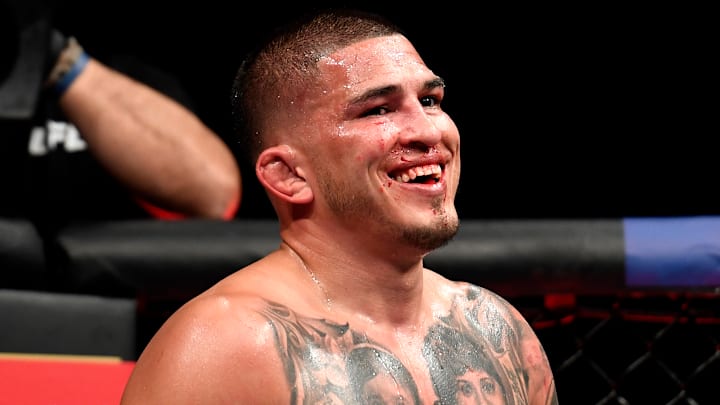Everything you need to know about the lightweight division.
MMA weight classes are now a norm whether you are watching the UFC, Bellator MMA, ONE Championship, or Cage Warriors. This was not always the case. In fact, the majority of the early foundations of MMA can be found in openweight tournaments, where competitors could have insane size discrepancies and still compete against each other.
As the sport pushed to become more professional and much more than ‘legalized street fighting’, the introduction of weight classes allowed MMA to compare itself to the most famous combat sport in boxing as well as appear as a viable option for professional athletes. Now, The UFC can count on 12 different weight classes, each with contenders, champions, and storylines to keep every fan engaged.
While MMA began its journey into weight classes with the heavier ones such as heavyweight and light heavyweight, that does not mean that the smaller weight classes have not been able to rise but also compete for popularity with their much heavier adversaries. Perhaps the best case for smaller weight classes has come from lightweight with the weight boundaries for this division being 156 pounds for non-title fights and 155 when the belt is on the line.
What was once the messiest division in the UFC during the mid-2000s has not only had a renaissance but has risen to the top of the MMA world. It all began with one of the most memorable trilogies in the history of the sport as Frankie Edgar and Gray Maynard would put themselves to the test with the title on the line, with Edgar barely coming out on top in the last two fights.
Anthony ‘Showtime’ Pettis helped to push the division to another level when he became champion but nothing would be bigger for the company, perhaps for the sport, than when on one fateful night in New York City, Conor McGregor would become the UFC’s first-ever simultaneous double champion after he defeated Eddie Alvarez.
This would not only make lightweight the most intriguing division to watch but it would eventually lead to the greatest rivalry in MMA history. During McGregor’s dip into boxing, the undefeated Khabib Nurmagomedov would become champion only for the controversial Irishman to come back to the UFC and look to regain his title once again.
What followed is perhaps the greatest build-up to any combat sports fight ever, leading to the UFC’s first and still only pay-per-view to generate over 2 million views as fans all over the world watched Nurmagomedov defeat McGregor by submission only for the champion to jump over the cage and start a massive brawl with the Irishman’s team amongst the spectators in Madison Square Garden.
The current champion, Islam Makhachev, might be looking unstoppable whilst riding a 12-fight win streak but the level of talent at 155, whether it is Charles Oliveira, Dustin Poirier, Justin Gaethje, or Beneil Dariush, has never been better.
Lightweight might not have the most freakish athletes within its ranks, but make no mistake, the 155-pound division has not only remained as one of the best weight classes in MMA currently but it has a strong case to be the best division of the 2010s.
